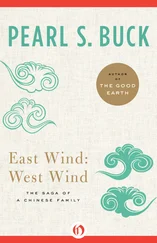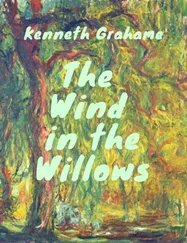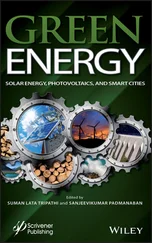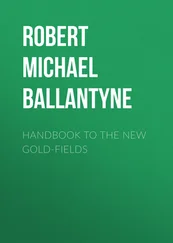Library of Congress Cataloging-in-Publication Data
Names: Burton, Tony, 1947- author. | Jenkins, Nick, 1954- author. | Bossanyi, Ervin, author. | Sharpe, David, author. | Graham, Michael, author.
Title: Wind energy handbook / Tony Burton, Nick Jenkins, Ervin Bossanyi, David Sharpe, Michael Graham.
Description: Third edition. | Hoboken, NJ : Wiley, 2021. | Includes bibliographical references and index.
Identifiers: LCCN 2020036473 (print) | LCCN 2020036474 (ebook) | ISBN 9781119451099 (cloth) | ISBN 9781119451150 (adobe pdf) | ISBN 9781119451167 (epub)
Subjects: LCSH: Wind power‐Handbooks, manuals, etc.
Classification: LCC TJ820 .B869 2021 (print) | LCC TJ820 (ebook) | DDC 621.31/2136‐dc23
LC record available at https://lccn.loc.gov/2020036473
LC ebook record available at https://lccn.loc.gov/2020036474
Cover Design: Wiley
Cover Image: Designed by Dr. Georgios Deskos
Tony Burton:After an early career in long‐span bridge design and construction, Tony Burton joined the Wind Energy Group (WEG) in 1982 to coordinate Phase IIB of the Offshore Wind Energy Assessment for the UK Department of Energy. This was a collaborative project involving British Aerospace, GEC, and the CEGB, which had the task of producing an outline design and costing of a 100 m diameter wind turbine in a large offshore array. Following this, he worked on the design development for the UK prototype 3 MW turbine, before moving to Orkney to supervise its construction and commissioning. In 1992, he moved to Wales to be site engineer for the construction and operation of one of the first UK wind farms at Cemmaes, which consisted of 24 300 kW WWEG turbines. He worked as a consultant in wind turbine foundation design from 1995 until 2012, when he joined GL Garrad Hassan to work on the design of offshore support structures until retirement in 2017.
Nick Jenkinscompleted a PhD in wind‐diesel systems at Imperial College London and is now Professor of Renewable Energy at Cardiff University. His career has included 14 years of industrial experience, of which 5 years were in developing countries. His final position in industry was as a projects director for Wind Energy Group, a developer and manufacturer of wind turbines. While at the university, he has developed teaching and research activities in electrical power engineering and renewable energy. He is a Distinguished Member of CIGRE and a Fellow of the IET, IEEE, Royal Academy of Engineering, and the Learned Society of Wales. From 2009–2011 he was the Shimizu Visiting Professor to the Atmosphere and Energy Program at Stanford University.
Ervin Bossanyi:After graduating in theoretical physics and completing a PhD in energy economics at Cambridge University, Ervin Bossanyi has been working in wind energy since 1978. He was a Research Fellow at Reading University and then Rutherford Appleton Laboratory before moving into industry in 1986, where he worked on advanced control methods for the Wind Energy Group. Since 1994, he has been with international consultants Garrad Hassan, now DNV GL, where he is senior principal researcher in renewables. He received the 2014 Scientific Award of the European Academy of Wind Energy for outstanding contributions to the development of wind energy and has had an honorary visiting professorship at Bristol University since 2016.
David Sharpehas worked in the aircraft industry for the British Aircraft Corporation as a structural engineer. From 1969 to 1995, he was a Senior Lecturer in aeronautical engineering at Kingston Polytechnic and at Queen Mary College, University of London. Between 1996 and 2003, he was at Loughborough University as a Senior Research Fellow at the Centre for Renewable Energy Systems Technology. David is a member of the Royal Aeronautical Society and was a member of the British Wind Energy Association at its inception. He has been active in wind turbine aerodynamics research since 1976. Currently, he is a Visiting Professor in the Future Wind and Marine Technology Innovation Centre at the University of Strathclyde, Glasgow.
Michael Grahamgraduated in mathematics followed by part 2 of the engineering degree from Cambridge University. He has a PhD in aeronautics from Imperial College London, where he has been Professor of Unsteady Aerodynamics since 1990 and was Head of the Department of Aeronautics from 1999 to 2003. He has worked in wind energy research since 1990, coordinating the EU Joule II project ROTOW and as a partner in a number of other EU and EPSRC research programmes dealing with aerodynamics of wind turbine rotors and latterly their wakes. He is a Fellow of the Royal Academy of Engineering, the RAeS, and RINA.
Preface to Second Edition
The second edition of the Wind Energy Handbook seeks to reflect the evolution of design rules and the principal innovations in the technology that have taken place in the 10 years since the first edition was published. A major new direction in wind energy development in this period has been the expansion offshore and so the opportunity has been taken to add a new chapter on offshore wind turbines and wind farms.
The offshore chapter begins with a survey of the present state of offshore wind farm development, before consideration of resource assessment and array losses. Then wave loading on support structures is examined in depth, including a summary of the combinations of wind and wave loading specified in the load cases of the IEC standard and descriptions of applicable wave theories. Linear (Airy) wave theory and Dean stream function theory are explained, together with their translation into wave loadings by means of Morison's equation. Diffraction and breaking wave theories are also covered.
Consideration of wave loading leads to a survey of the different types of support structure deployed to date. Monopile, gravity bases, jacket structures, tripods, and tripiles are described in turn. In view of their popularity, monopiles are accorded the most space and, after an outline of the key design considerations, monopile fatigue analysis in the frequency domain is explained.
Another major cost element offshore is the undersea cable system needed to transmit power to land. This subject is considered in depth in the section on the power collection and transmission cable network. Machine reliability is also of much greater importance offshore, so developments in turbine condition monitoring and other means of increasing reliability are discussed. The chapter is completed by sections covering the assessment of environmental impacts, maintenance and access, and optimum machine size.
The existing chapters in the first edition have all been revised and brought up to date, with the addition of new material in some areas. The main changes are as follows:
Chapter 1: IntroductionThis chapter has been brought up to date and expanded.
Chapter 2: The wind resourceDescriptions of the high frequency asymptotic behaviour of turbulence spectra and the Mann turbulence model have been added.
Chapters 3 and 4: Aerodynamics of horizontal axis wind turbinesThe contents of Chapters 3and 4of the first edition have been rearranged so that the fundamentals are covered in Chapter 3and more advanced subjects are explored in Chapter 4. Some material on field testing and performance measurement has been omitted to make space for a survey of wind turbine aerofoils and new sections on dynamic stall and computational fluid dynamics.
Chapter 5: Design loads for horizontal axis wind turbinesThe description of IEC load cases has been brought up to date and a new section on the extrapolation of extreme loads from simulations added. The size of the ‘example’ wind turbine has been doubled to 80 m, in order to be more representative of the current generation of turbines.
Читать дальше












